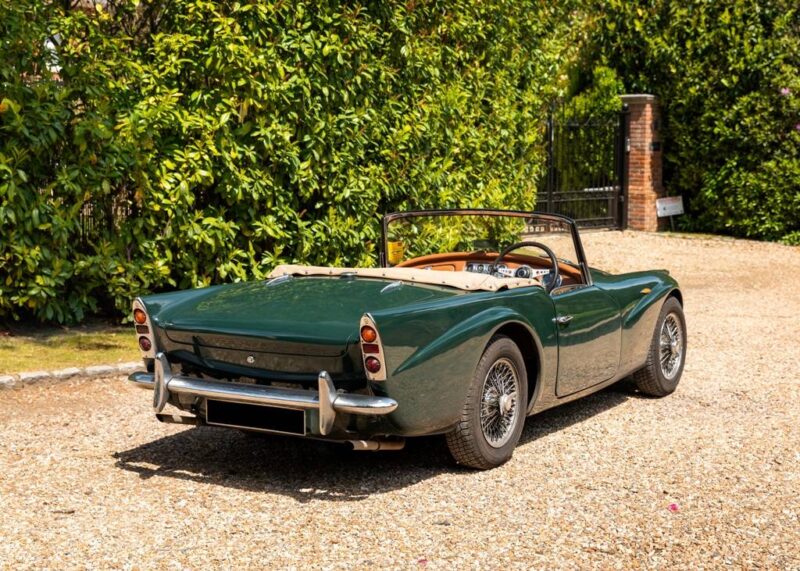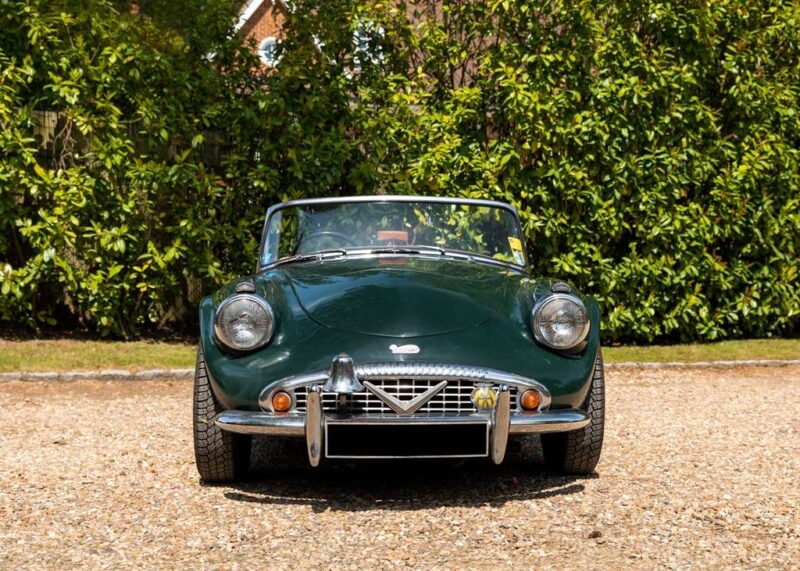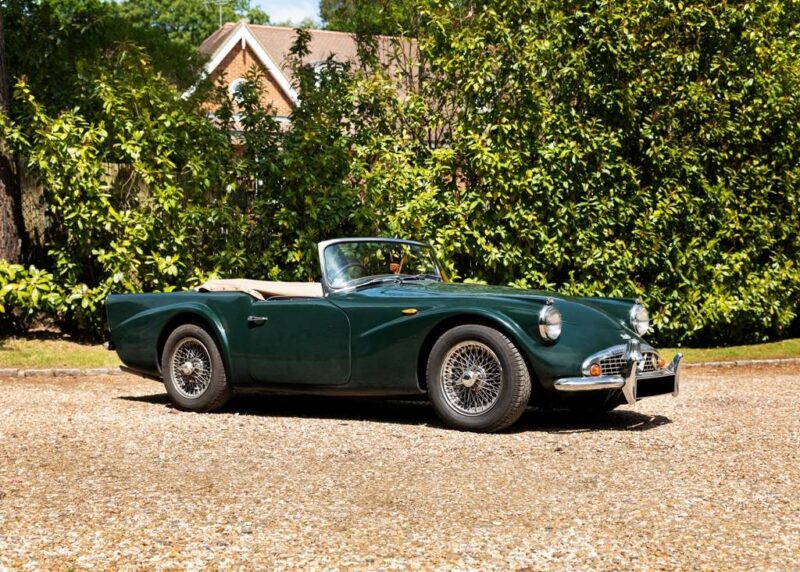
Daimler Dart SP250: A Prince Disguised as a Toad
Words Roberto Marrone Photos Historics Auctioneers
At the end of the 1950s, Daimler Motor Company, founded by Harry J. Lawson in 1896, which had always been official supplier of the English Royal House, needed to present something new, which stood out from the austere, very classic sedans that customers was used at the time. Thus, a two-seater convertible car was the choice, with the aim of conquering the American market which so much requested this type of car. The name chosen was Dart, but Dodge had already registered this name, so the acronym became SP250.

The first prototypes already began circulating in 1957. The engine featured a 2,547 cc V8 designed by Edward Turner with a cast iron crankcase, light alloy head, single central camshaft, two classic SU carburettors and a four-speed Moss gearbox. It had 142 hp and reached 200 kph. Acceleration from 0 to 100 kph took place in just 8.9 seconds, truly remarkable for the time. But the most bizarre thing was precisely the design by the hand of Jack Wickers: the front stood out in fact for the round and protruding headlights on a curved and aerodynamic bonnet, the very flattened ovoid grille gave it the appearance of a toad, while at the rear there were two very large fins on which the round vertical headlights were placed and perhaps these “oddities” did not win the hearts of a good part of potential customers.




Certainly the interior was very luxurious and well finished, the materials used were proper English style, seats, panels, all in top quality leather and even the floor was covered in fine wool – difficult to beat the Brits here – The bodywork was in fiberglass and it had a double advantage, namely weighing and costing less than steel. It was presented to the public in 1959 at the London Motor Show and subsequently in New York. Daimler’s effort, however, was not enough to save the company, in fact already in 1960 Jaguar absorbed the brand, continuing to produce sedans under the Daimler name with small variations which mainly concerned the grille and logos and the SP250 also continued to be produced. Already in 1961 the second series was born, featuring a reinforced chassis on the front and rear, given that the excessive ease with which it flexed even caused the doors to open. A third series also arrived with further changes and improvements, especially in the cockpit. Production ceased in 1964. In total 2,648 examples were built (in addition to the 6 pre-series). Therefore: A-Spec 1,924, B-Spec 474, C-Spec 256. Certainly the numbers remained very far from the targets that the company had foreseen. It’s a shame, because after all, performance and handling allowed it to keep up with cars with even larger displacements; who knows if it was just those slightly over the top stylistic choices that were to blame. The fact remains that the small number of cars built could make today’s collectors happy, given that its price is – for the moment – still at affordable levels.





